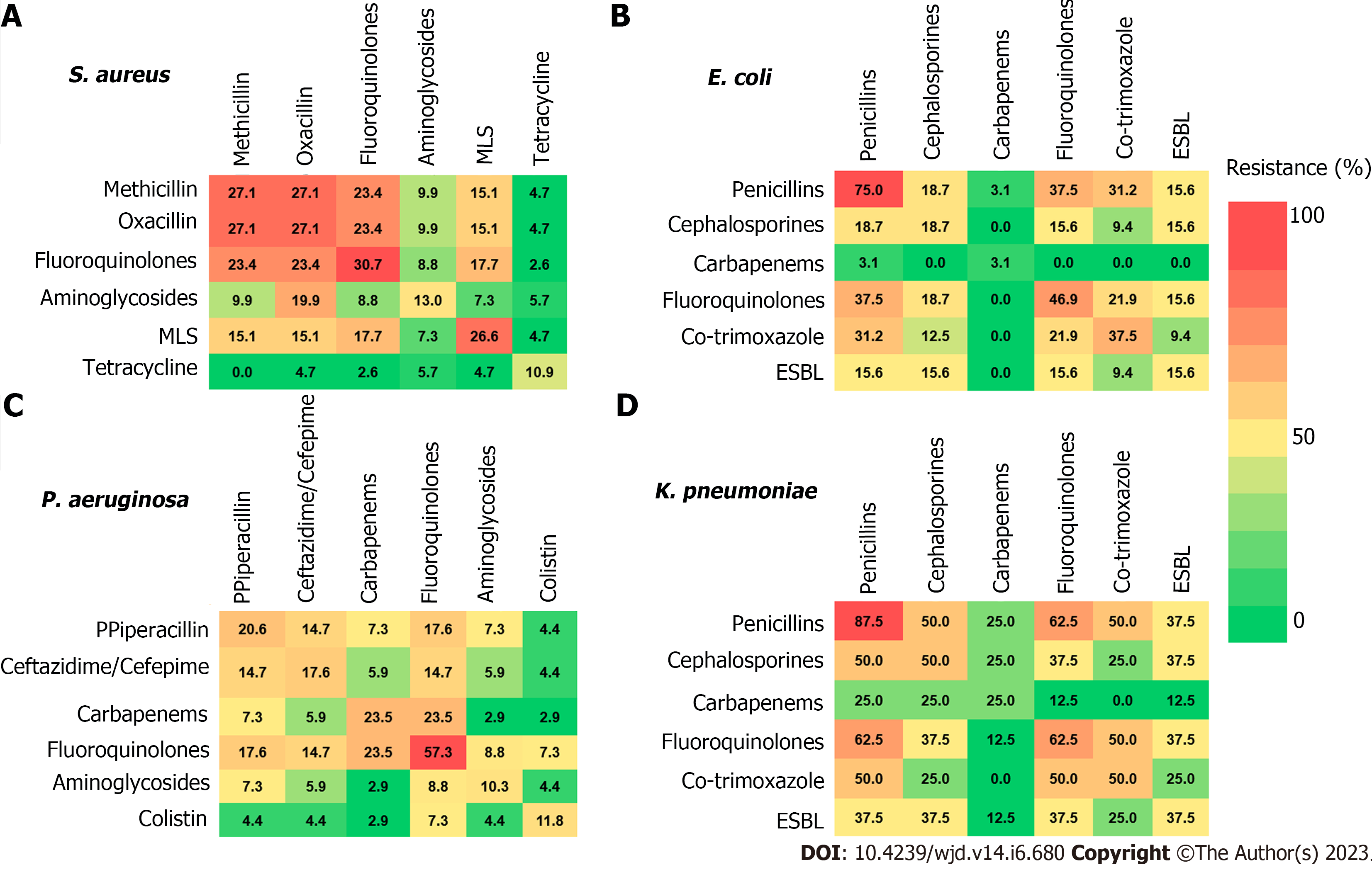Copyright
©The Author(s) 2023.
World J Diabetes. Jun 15, 2023; 14(6): 680-704
Published online Jun 15, 2023. doi: 10.4239/wjd.v14.i6.680
Published online Jun 15, 2023. doi: 10.4239/wjd.v14.i6.680
Figure 2 Resistance of bacteria isolated from diabetic foot infections to different classes of antibiotics as monotherapy or in combinations.
A: Staphylococcus aureus (S. aureus); B: Escherichia coli (E. coli); C: Pseudomonas aeruginosa (P. aeruginosa); D: Klebsiella pneumonia (K. pneumonia). The data presented as percentages of resistance, adopted from Boschetti et al[84]. Resistance to oxacillin expects resistance to cephalosporines, carbapenems, and β-lactams. MLS: Macrolides, lincosamides, and streptogramines; ESBL: Extended spectrum beta-lactamases.
- Citation: Rajab AAH, Hegazy WAH. What’s old is new again: Insights into diabetic foot microbiome. World J Diabetes 2023; 14(6): 680-704
- URL: https://www.wjgnet.com/1948-9358/full/v14/i6/680.htm
- DOI: https://dx.doi.org/10.4239/wjd.v14.i6.680









